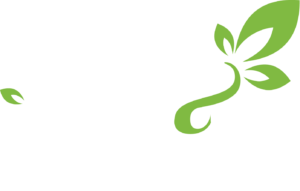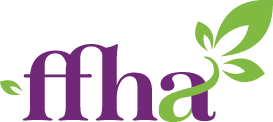Samantha J. Walters, MPH, IBCLC
Download: The Best Start for Breastfeeding
Breastfeeding supports the health of both the baby and the breastfeeding person in many ways. Breast milk is the perfect food for babies because it has evolved along with humans to provide the proper nutrition. It protects and strengthens the baby’s immune system and protects against obesity, even later in life. It helps reduce the baby’s chances of middle ear infections, SIDS, diabetes, hypertension, and even some types of cancers. There are also many benefits for the breastfeeding parent, such as reduced chance of breast cancer, ovarian cancer, diabetes, and heart disease.
 However, although breastfeeding may be “natural,” it is not always easy. Like any skill, there are things that you can do to set yourself up to meet your breastfeeding goals. Below are recommendations for ways that you can get your breastfeeding relationship off to the best start.
However, although breastfeeding may be “natural,” it is not always easy. Like any skill, there are things that you can do to set yourself up to meet your breastfeeding goals. Below are recommendations for ways that you can get your breastfeeding relationship off to the best start.
Do your homework
Breastfeeding is natural in the sense that most birthing parents have the breasts and the breast tissue needed to be able to breastfeed. However, culture does not always normalize breastfeeding and in some countries it’s not something that is commonly seen or talked about. It can be very helpful to take a breastfeeding class or attend a breastfeeding support group before your baby arrives. There, you can ask questions and learn about the basics of how breastfeeding works. Just being around breastfeeding parents can be helpful, as watching parents breastfeed is a great way to learn about ways to hold your baby when nursing. Imagine learning to drive if you’ve never seen anyone do it! Breastfeeding is similar– it’s more challenging if you’ve never seen it in person.
Know your resources
It can be helpful to learn about all the breastfeeding support that is available in your community, before your baby arrives. During the postpartum period, it can feel overwhelming to search out the support that is often needed to ensure a healthy breastfeeding relationship. Do the research during pregnancy! Seek out breastfeeding support groups near you, join online breastfeeding groups, and ask your obstetric provider or midwife about local lactation consultants. If you interview a pediatrician, ask them about lactation support that may be offered at the office, or close by. Talk with friends who have breastfed and ask questions. Talk to your partner about your wishes and goals for  breastfeeding. A supportive partner can make all the difference. At the end of this article, you will find some helpful online resources to start you off.
breastfeeding. A supportive partner can make all the difference. At the end of this article, you will find some helpful online resources to start you off.
Make breastfeeding part of your birth plan
Studies show that birth interventions can make breastfeeding more challenging, especially in the first few hours and days. However, many healthcare providers don’t mention this when counseling about birth options such as epidural, Pitocin, and cesarean. Ask your doctor about the ways in which your birth plan may help or hinder breastfeeding. You can also ask about the hospital policies that are in place to support breastfeeding once baby arrives.
No matter what kind of birth experience you’re hoping for, find a doula who can be there to support you! A doula is a person who provides emotional and physical support during labor, birth, and postpartum. They are not medical providers, but rather someone who will be there to encourage and support you. There is research that shows that doula support increases the chances that you will meet your breastfeeding goals. A strong support system makes all the difference.
 Practice skin-to-skin during the magic hour and beyond
Practice skin-to-skin during the magic hour and beyond
Plenty of research has found that skin-to-skin has great benefits for parents and baby, starting from the first hour after birth. At many hospitals– especially those designated as “Baby-Friendly Hospitals”– the first “magic hour” after birth is a protected time, when baby is left skin to skin on the birthing parent’s chest. The baby is given the time and space they need to find the breast and latch on the for the first time. In fact, studies have shown that all infants go through 9 different stages, in the same order, when left undisturbed on their birthing parent’s chest right after birth. The stages begin with the birth cry and end with falling asleep after suckling at the breast for the first time. During the stages in between, the baby is spending time getting to know their surroundings and “crawling” to find the breast and nipple. Allowing your newborn to have the time and space to do these 9 things– which means allowing them to follow their own instincts, instead of forcing them to eat right away or whisking them off away to be cleaned off or weighed–can make breastfeeding much easier. For parents, breastfeeding is a learned activity, but babies are born with the instincts needed to nurse. Let the baby lead the way and things can be much easier!
Room in and learn your baby
It used to be much more common to send the baby to the nursery so parents can get rest in the hospital. Nowadays, though, healthcare providers understand that keeping the baby in the room with the birthing parent– called “rooming in”– carries great benefits for the whole family. When baby is kept close, parents are able to learn baby’s early hunger signs. Responding to the baby when they show those early hunger signs– such as sucking on their hands, licking their lips, and moving their head back and forth– can make breastfeeding easier because that is when baby is hungry but still calm. Latching the baby to the breast can be much more difficult if parents wait until baby is crying– which often will happen when baby is in the nursery and then brought into the room when hungry. Additionally, contrary to common belief, studies show that both baby and parents get more sleep when they are in close proximity!
Supplement only when truly medically necessary
Breastfeeding is a supply-and-demand process– the more frequently and thoroughly breasts are drained (through direct breastfeeding, hand expression and/or pumping), the more milk the breasts will produce. If a baby is given a bottle of formula, then it is a missed opportunity to stimulate the breasts, which can then lead to slower milk production and a low milk supply. Donor milk and infant formula are alternatives to breastmilk when medically necessary. If a parent can’t breastfeed and donor milk is unavailable, formula is critical. However, offering formula or donor milk when not medically necessary can make it much more difficult to meet your breastfeeding goals. If it is necessary to give baby a bottle, you should stimulate your breasts with a pump or hand expression to help maintain your milk supply.
 Learn how to do breast massage
Learn how to do breast massage
Gentle breast massage is one of the best things you can do to reduce pain from engorgement in the early days postpartum as your breasts are filling with milk. It’s also an important form of self-care for all breastfeeding parents. Frequent gentle massage can reduce the risk of plugged ducts and mastitis and it’s a great way to check in with yourself to make sure that your breasts are draining evenly. When doing breast massage, a light touch is important. Massage should not be painful. In fact, breast massage is effective when your touch is as light as if you were touching your baby’s face. Using this light touch to massage upward, toward your armpit, can help keep your lymph system active, which will reduce feelings of swelling and engorgement.
Watch for Warning Signs
Even if you follow all these tips, you may meet challenges while breastfeeding. Contact your obstetric provider or lactation consultant if you notice any of the following warning signs:
- You have persistent pain
- It is consistently difficult to get your baby to latch
- Your baby is fussy after most feedings
- Baby’s weight gain and/or urine and stool output are inadequate
- You don’t feel your milk “come in” after day 3 or 4
- You feel extremely engorged and it is difficult to get your baby to latch on
- There is an area of your breast that is hard, painful, and/or red, especially if accompanied by a fever
- You feel overwhelming or persistent feelings of sadness, anxiety, guilt, rage, or fear
The bottom line is that breastfeeding is incredibly rewarding but can be very challenging. Following these tips can help you meet your breastfeeding goals. When in doubt, seek out support!
Take Home Points
- Breastfeeding has many benefits for both the baby and the breastfeeding parent
- Do your research before you baby arrives: seek out support resources and discuss your birth plan with your obstetric provider
- Rooming in with your baby and practicing skin to skin during the first “magic hour” and beyond can help make breastfeeding easier
- Supplement only when medically necessary, and make sure to pump or express milk to boost your supply if you need to give infant formula or donor milk
- Breast massage is a great way to relieve engorgement and check in with your body when breastfeeding
- Watch for warning signs and seek out support as needed
Additional Resources
- Helpful videos about how to latch baby and about hand expression and breast massage: https://bfmedneo.com/resources/videos/
- KellyMom Breastfeeding Resource: https://kellymom.com/
- Peer Support:
- Breastfeeding USA: https://breastfeedingusa.org/
- La Leche League: https://www.llli.org/
- Support for returning to work or school as a breastfeeding parent: https://www.facebook.com/groups/PREPBreastfeedingSupport/
Author Information

Samantha Walters is a bilingual lactation consultant, entrepreneur and public health educator passionate about providing opportunities for individuals to connect with their bodies in new and powerful ways. She holds a Master of Public Health degree from Oregon State University, where her primary area of research was women’s sexual and reproductive health. Samantha is the founder of the BodyTruth Project, a platform that makes space for individuals to find the truth and power in their own bodies by exposing the false foundations of the health and wellness industries, and by supporting professionals to facilitate transformative client-directed work. She lives in Cleveland with her husband and 2 children. She has no conflicts of interest to report.






